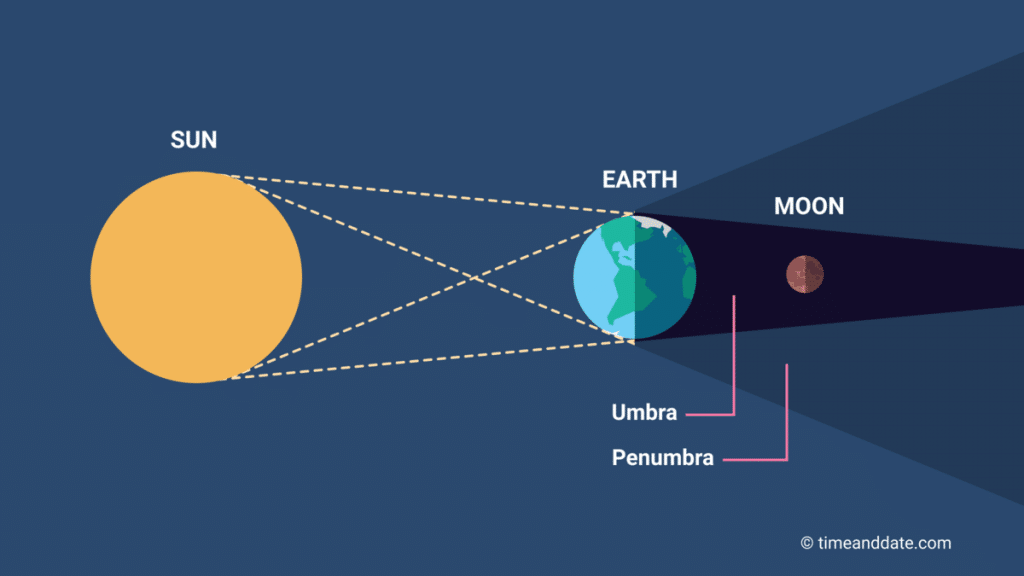
This is one celestial show you don’t want to miss.
During the evening hours of May 15, the Earth will cast its shadow over the moon creating a ‘Super Flower Blood Moon’ total lunar eclipse which will be “ideally positioned in the sky for viewing in the Midwest and most of North America.”
According to Chicago’s Adler Planetarium, the partial lunar eclipse will start at 9:27 pm (CDT) with totality expected to last for a duration of nearly 90 minutes on Sunday night beginning at 10:29 pm and lasting until just before midnight at 11:54 pm.
🤩 Ready for a stunning celestial sight on 5/15? Save this #LunarEclipse viewing chart to use as a reference the night of the #TotalLunarEclipse. pic.twitter.com/NCQg1DYAen
— AdlerPlanet (@AdlerPlanet) May 11, 2022
While a ‘Super Flower Blood Moon’ total lunar eclipse is a mouthful, all it really means is that a super moon and a total lunar eclipse will occur simultaneously.
A super moon is a celestial event that describes the moon at its closest proximity to the Earth on its orbit (or reaches “perigee”). As a result, the moon appears to be bigger and brighter than usual.
A total lunar eclipse, on the other hand, happens when the moon moves through the Earth’s umbra (central shadow) which consequently makes it appear dimmer with a coppery red tint.
The May moon’s moniker is derived from the abundance of flowers during spring in the Northern Hemisphere and the red color caused by the refraction of light passing through the Earth’s atmosphere. And when you put it all together you have the ‘Super Flower Blood Moon’.

During a total lunar eclipse, the only light reflecting onto the moon is coming through the Earth’s atmosphere. Thus, the light from all the sunrises and sunsets in the world are “projected” onto the Moon, causing it to appear red, according to NASA.
A total lunar eclipse has 7 phases as it moves through the Earth’s umbra and penumbra. It starts and ends with a penumbral eclipse which is when the moon moves into the Earth’s outer shadows. Then a partial eclipse happens when the moon moves into the umbra and out of the umbra.
A total lunar eclipse happens when the moon is completely within the umbra and this is the phase that can be seen with the naked eye. A maximum eclipse is when the moon is slap-bang in the middle of the umbra.
One week to go! The last primary #moonphase before the #fullmoon is the #firstquartermoon on May 9, 00:21 UTC. That means that this month's #lunareclipse is just a week away.
We will be LIVE streaming the whole event. https://t.co/WlWHS1bPJM
Image: ©https://t.co/48zy8twani pic.twitter.com/dG7d4EoLTc— timeanddate.com (@timeanddate) May 8, 2022
A Time and Date page dedicated to the exact times the eclipse will happen for Chicagoans states that the Penumbral Eclipse will begin at 20:32 pm on Sunday night with the eclipse reaching its most significant magnitude above Chicago at 23:11 pm and the penumbral eclipse will end at 01:50 am.
More information specific to Chicago can be found here. Time and Date will also be running a live stream of the event for the duration of the eclipse.
For those in Chicago, the Adler Planetarium will be hosting a viewing event from 9:00 pm–12:00 am on Sunday, May 15, 2022, where “astronomy experts and telescope volunteers will be hanging around the outside of the Adler Planetarium, answering questions and setting up small telescopes for viewing the eclipse.”
[Featured image from Instagram / @maidaskys]

